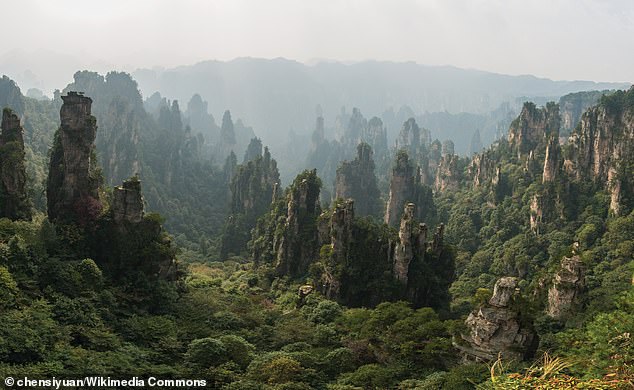
Avatar’s Real-Life ‘Wonderland on Earth’ Stuns Viewers With Shocking Transformation
China’s Avatar-Inspired "Wonderland" Now a Polluted "Cesspit"
Zhangjiajie National Forest Park in China, the real-world inspiration for the lush alien world of Pandora in James Cameron’s Avatar (2009), faces an environmental crisis as one of its ancient caves has become a landfill brimming with trash and sewage.
[Image: Zhangjiajie’s towering quartz cliffs shrouded in mist]
Caption: The stunning landscapes of Zhangjiajie, a UNESCO site, inspired the fictional Pandora in "Avatar."
From Natural Wonder to Waste Dump
Recent footage reveals a cave within the park, estimated to be hundreds of thousands of years old, now overrun with plastic bottles, wrappers, and murky sewage. Explorers documented mountains of debris, some dating back to 2015, highlighting years of neglect. Authorities believe tourists dumped the trash over a decade, while local farmers reportedly contributed to the pollution by illegally discharging wastewater. The contaminated water has seeped into nearby streams, raising concerns about drinking safety for nearby communities.
[Image: A cave interior flooded with plastic waste]
Caption: An ancient cave in Zhangjiajie, once a natural marvel, now clogged with garbage.
Tourism’s Dark Side
Zhangjiajie’s fame surged after Avatar showcased its ethereal landscapes. The park renamed a landmark “Hallelujah Mountain” in the film’s honor and erected statues of the Na’vi protagonist, capitalizing on its Hollywood connection. However, mass tourism strained its ecosystems. The park’s infrastructure, including the world’s tallest outdoor elevator (Bailong Elevator) and a glass bridge, draws millions annually—and with them, pollution.
[Image: Visitors posing with an Avatar-themed statue]
Caption: Tourism boomed after "Avatar," but overcrowding has taken a toll.
Efforts to Clean Up
Local officials launched an investigation into the cave’s pollution, working to address sewage sources and waste management. However, reversing the damage to delicate stalactite formations and groundwater could take years. Meanwhile, the park’s wildlife, including mischievous monkeys, continues to navigate habitats increasingly fragmented by human activity.
A Global Issue
Zhangjiajie’s plight mirrors challenges at UNESCO sites worldwide, where preserving natural wonders clashes with tourist demand. While the park remains a “must-see” destination, its struggle underscores the urgent need for sustainable travel practices.
[Image: The Bailong Elevator ascending a cliff face]
Caption: The Bailong Elevator, a feat of engineering, underscores the park’s struggle to balance access and preservation.
Once a pristine “wonderland,” Zhangjiajie’s story serves as a cautionary tale: without mindful stewardship, even Earth’s most magical places risk becoming casualties of their own beauty.
Word count: ~600


